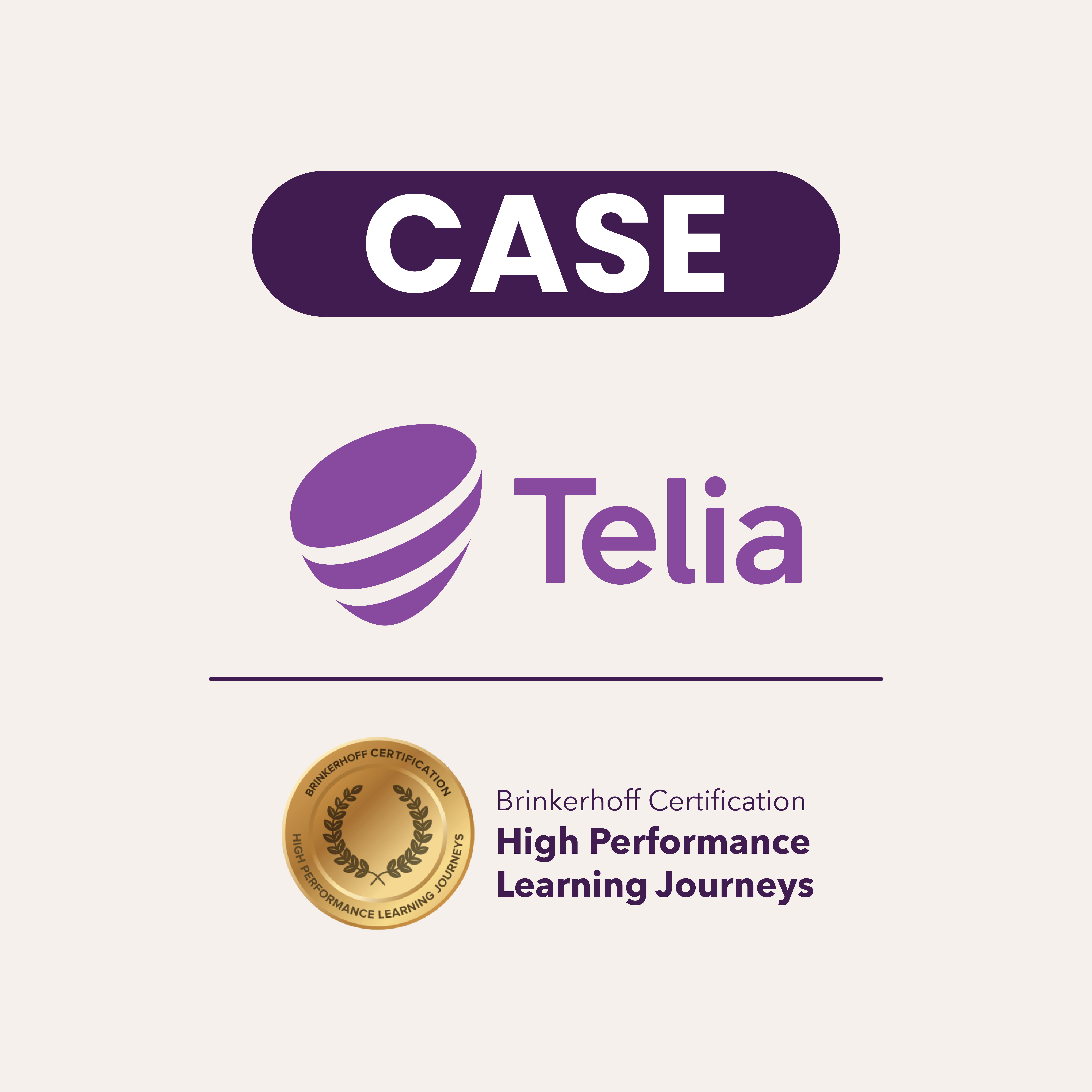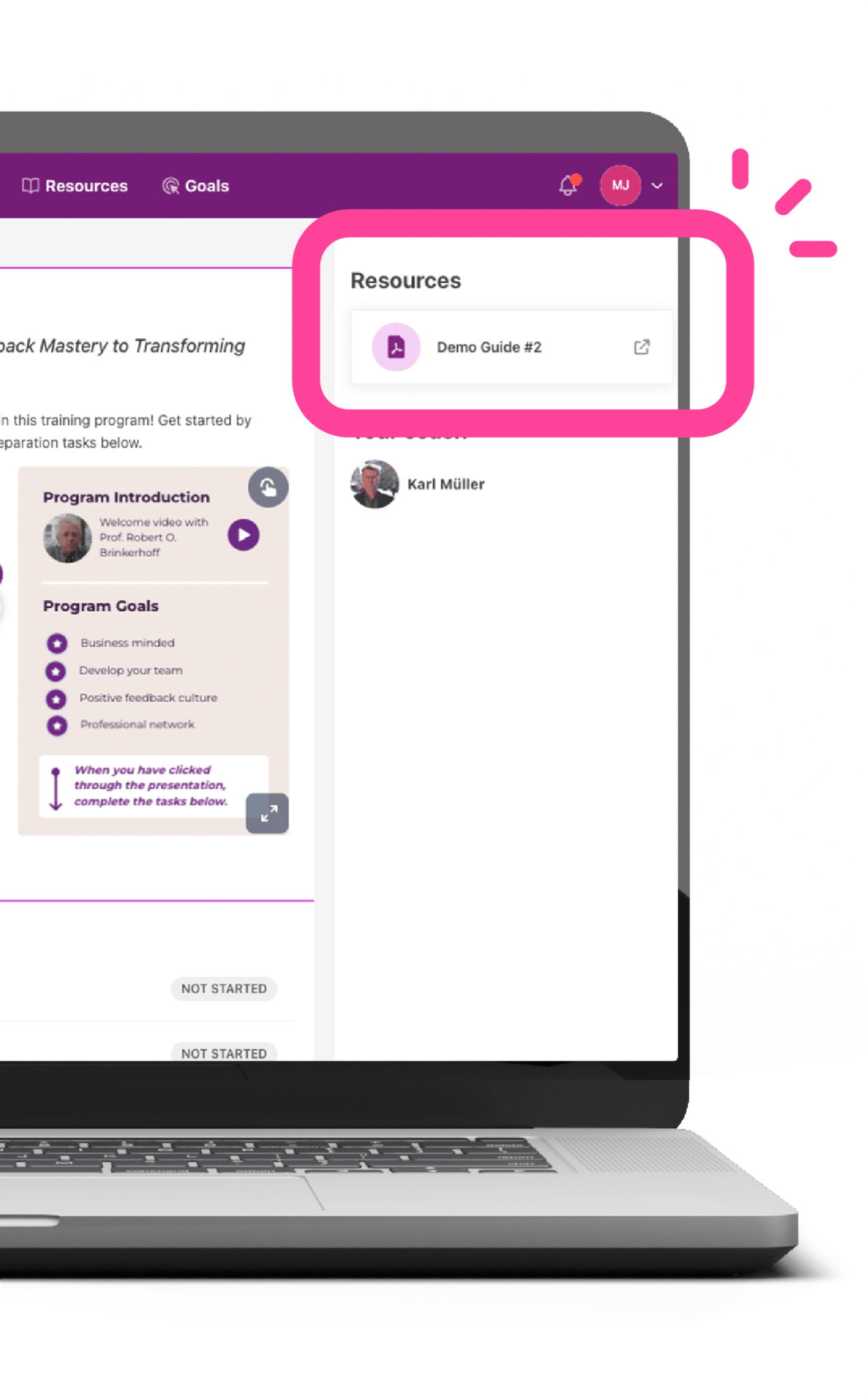“What are you most proud of? What challenges are you currently having?”
As mentioned in my previous post on this topic (Part 1), senior managers and members of their management teams can contribute a lot of fantastic content to a High Performance Learning Journey (HPLJ). I want to reiterate that the more they understand the valuable role the program plays in contributing to strategic business results, the more invested they will be in making the program a success.
First, let’s take a step back and quickly list a few of the ways senior managers can contribute:
- Giving input about which performance outcomes the program should lead to
- Sharing information that will make the program content relevant to the business (e.g. real life situations as inspiration for case studies)
- Actively participating in the program themselves. This can range from video presentations with Q&A to coaching to participating in a simulation.
The question now is how do you get them to contribute?
This post will focus on senior managers sharing information (and getting members of their teams to share). Once this important step is accomplished, it is then MUCH easier to then get them to actively participate in the program themselves.
The information that senior managers provide could be strategic targets and initiatives, information about organizational history, structure, or processes, as well as concrete challenges that get in the way of business success.
Let me be clear that getting information from someone is often an iterative process, often taking place through multiple conversations over time. So you need to plan accordingly. My recommendation is to be transparent about the process, without scaring people away with nightmares about countless meetings that drag on forever. There’s no need to tell them that you will need hours upon hours of their time because, you don’t know exactly how much of someone’s time you will need until you know what information they have and in what way they can contribute. In addition, they may not need to give so much time themselves if there are other people in the organization who have more concrete information. It’s better for the more senior person to give you the big-picture information and then direct you to others who have the details.
So what do you do?
In my experiences, it’s best to ask for a 45-minute phone call to start with and then assess the situation at the end of the call.
I won’t go into all of the details about scheduling the call and how to conduct the call—that is an art in and of itself—but there are two key points that truly make a difference in my experience.
Be Professional: For me, professionalism is a hygiene factor, and has three core elements.
- Be structured in your communication – explain the purpose of the call (both when requesting the call, and at the beginning of the call itself), agree on the duration of the call, and stick to the agreed time.
- Show gratitude – a manager’s time is valuable and therefore, it is important to show appreciation for the time he/she gives you. I always thank the person for his/her time both at the beginning and end of the call (as well as on other occasions, if you have more interaction)
- Deliver results – this might be in the form of a case study for him/her to read and give feedback on. At at the very least, you should send a short e-mail giving the person an update on the program.
Be Curious: it is common knowledge that showing genuine interest in a person and what he or she does builds trust. Let’s explore this second point further.
Be curious – get the most out of your call
After reminding the person about the purpose of the call—but before leaping into my questions—I always ask if it’s okay that we take a few minutes introducing ourselves to each other. I do this out of genuine interest, but also because it puts the person at ease: talking about his/her background requires absolutely no effort, and he/she can decide what exactly to focus on (education, career, family, etc.)
Next, I tell the person more about the program itself: it’s objectives, it’s structure and any other information that might be relevant to the purpose of the conversation.
In general, your call should have two counter-balancing purposes, to get important information and to build goodwill with the senior manager. When done well, these two purposes reciprocate each other.
Getting to your questions
Now I start asking questions. If it’s a senior manager, then I generally start with high-level questions about the structure of his/her particular organization, its history, and any recent changes. Throughout this stage, I will ask multiple follow-up questions in order to get a better lay of the land. In addition, showing genuine curiosity about the organization with these kinds of questions builds a fair amount of credibility with the senior manager, thus making him/her willing to share even more information. If the person refers to any concrete structure or process, I always ask if he/she can send material.
Two must-have questions to ask
So far, we have started to get to know each other a bit and my questions require minimal effort from the other person. Now is when I raise the stakes. Two questions that I always ask are “What are you most proud of in terms of your organization’s achievements?” and “What challenges are you currently having?” (And in this order) The first question is to get the person to be a bit more reflective and give concrete examples of what is happening in his/her organization. It also makes him/her more willing to answer the second question about challenges. Asking a senior manager about the challenges in his/her organization is very much a dance—you need to “read” the person. I always start by explaining that the conversation is confidential and that any details used in the case will be tweaked to avoid identification.
Once I’ve understood the overall challenges, and identified a good subject for the case study, I generally don’t go into the details of the case study with the senior manger. Instead, I ask if there are people in his/her team who I could speak with in order to work out the details of the case.
Getting the blessing
I do so for several reasons: it shows the senior manager that I respect his/her time, it broadens the web of people involved, and lower-level managers are MUCH more comfortable talking about the nitty-gritty challenges that will make the case relevant. I always ask the senior manager if he/she could contact the member of his/her team first in order to explain the situation and then put us into contact with each other. This makes the contact with the lower-level manager much easier because it has the “blessing” of the senior manager.
Even if we haven’t used up the full 45 minutes, I will end the call early. Again, this shows professionalism and earns goodwill. After thanking the senior manager for his/her time and help, I ask if it’s okay that I reach out with follow-up questions or to give an update on the situation. They always say “yes.”
Getting a senior management team to not only approve a development program but actively contribute is a big step towards an HPLJ. So, schedule the calls and pull out your pen and paper.




